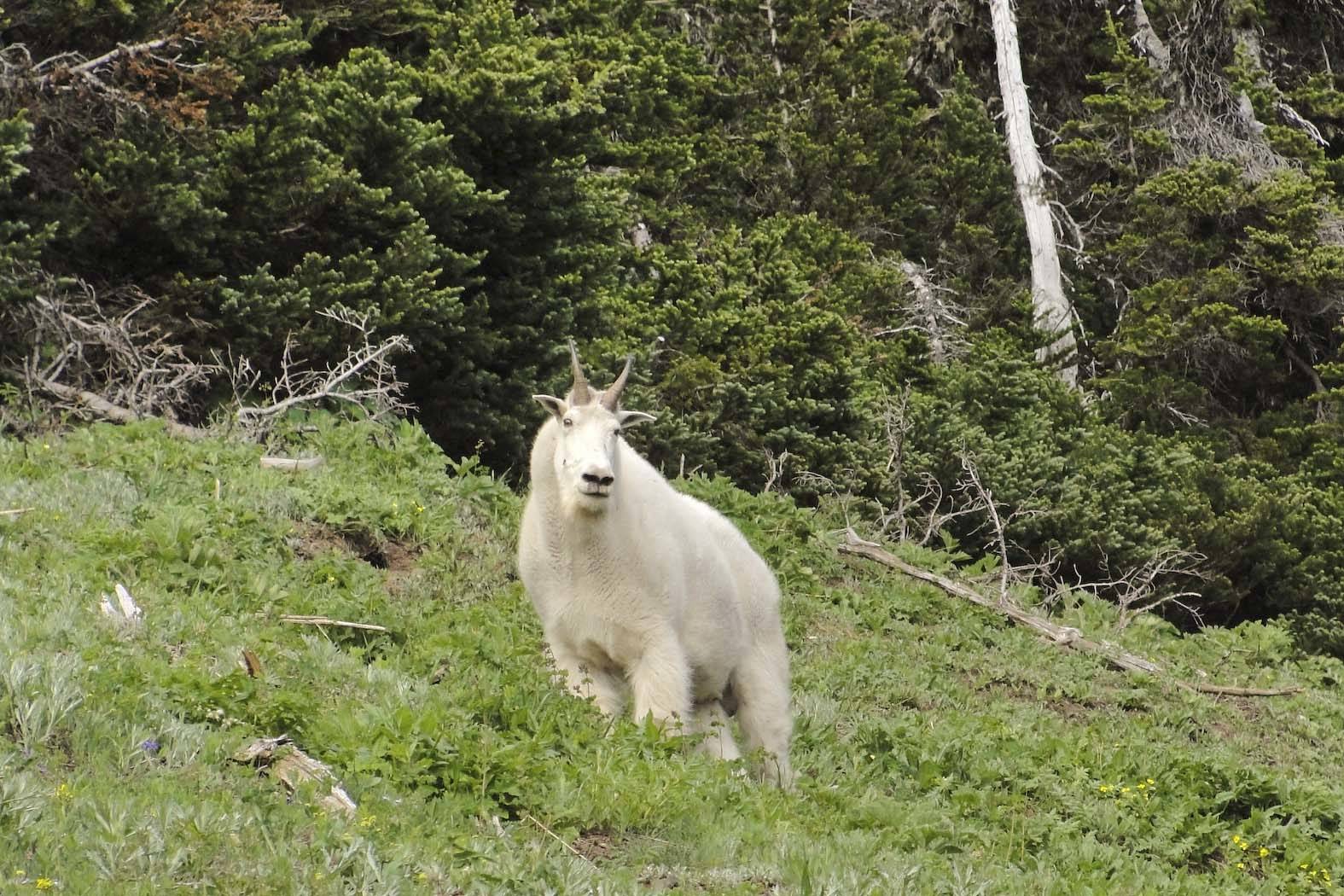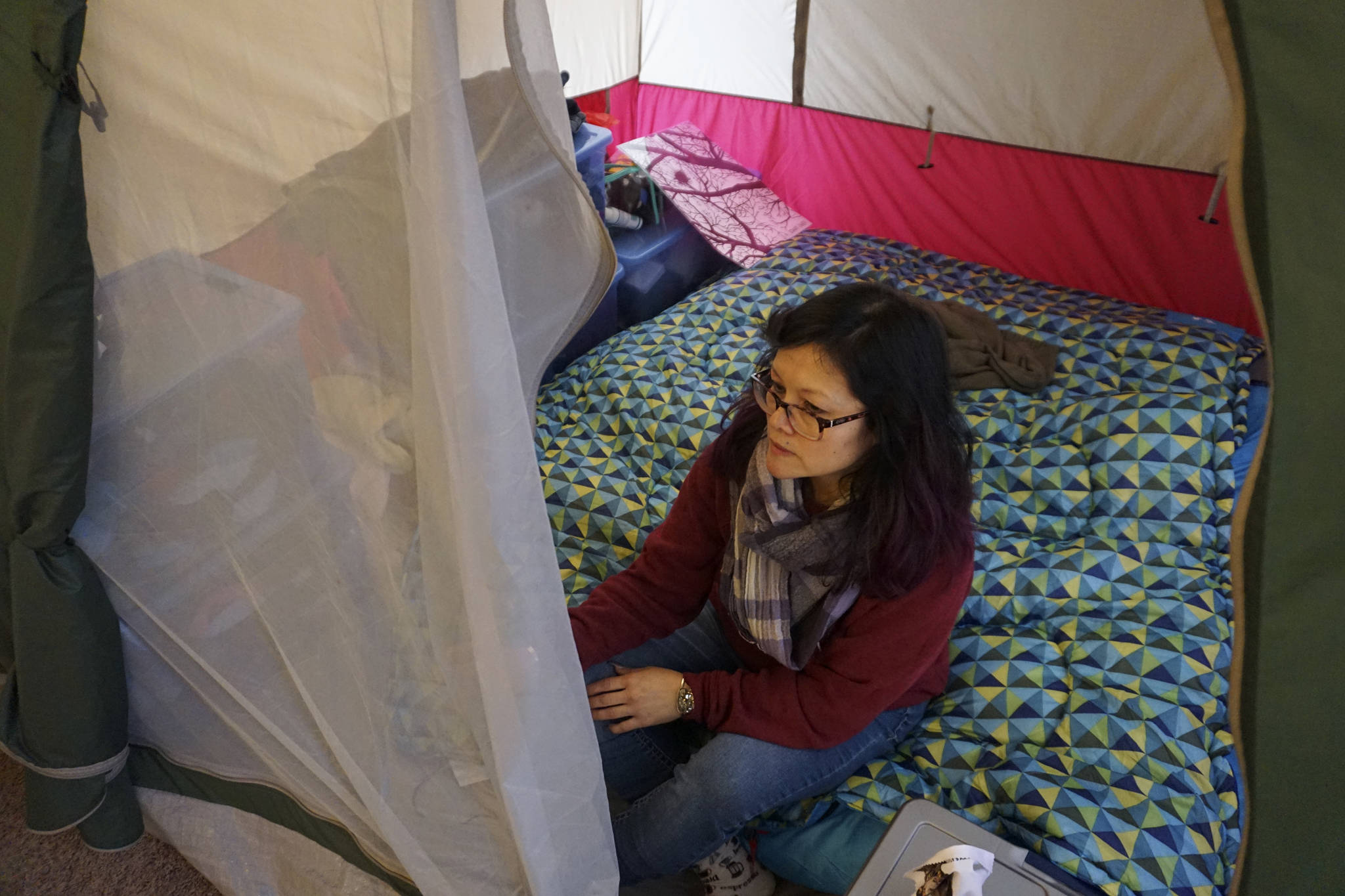The picturesque scene of mountain goats overlooking rocky peaks is a common sight in Olympic National Park, but it won’t be for much longer. Officials plan to remove 90 percent—upwards of 675 mountain goats—from the park, and transfer up to half of them to the North Cascades national forests beginning this summer. The National Park Services’s Mountain Goat Management Plan also calls for the lethal removal—through shotguns or high-powered rifles—of the remaining goats in remote terrain that are difficult to capture. The lethal removal would begin as early as fall 2019.
Park officials say that the animals are non-native to Olympic National Park, and that their grazing and wallowing habits are having negative effects on the area’s flora and fauna. Moreover, the mountain goats have disrupted the Olympic Peninsula’s ecosystem as a “source of competition that impacts certain native wildlife species and their habitat,” according to the plan, which was released on May 4. The document also lists concerns that archaeological resources could be destroyed by the goats, and notes the potential for goat-human contact that could go awry. Relocating the animals to the more hospitable North Cascades would also help restore goat populations in areas where they have been overhunted, says Olympic National Park official Christina Miller.
However, Seattle-based animal rights organization Northwest Animal Rights Network (NARN) posits that killing the hoofed animals is inhumane. Members also condend that the plan does not prioritize keeping goat families together during the relocation. In fact, the plan includes an alternative to translocate mountain goat kids to zoos. NARN believes that the park’s use of helicopters to capture or kill the goats could cause disruption to the ecosystem, which park officials purport that they’d like to avoid.
“[Park officials] are talking about bringing helicopters in there, they’re sending people into the backwoods. So it doesn’t seem particularly good for the Olympic National Park either to have it impacted that greatly to have people tramping around back there,” says NARN board member Rachel Bjork.
The National Park Service has wanted to remove the goats for at least two decades, says Miller, but officials faced public backlash for the plan, leading them to push the project off for years. According to park officials, 12 mountain goats were originally introduced in the Olympic Peninsula between 1925 to 1929. Since then, the mountain goat population has ballooned. A 2016 survey revealed an 8 percent annual rate of population increase between 2004 to 2016, and projects that the total number of goats in the park would grow to 725 by 2018.
The goat removal suggestion gained greater public approval following the 2010 killing of a 63-year-old Port Angeles hiker. Miller attests that the tragedy did not precipitate the plan, but Bjork says that NARN has filed a Freedom of Information Action request to be sure.
Miller says that the Olympic Peninsula lacks salt sources that the mountain goats need in their diet, which causes them to follow around humans to gain sodium from their sweat, food, or urine. On the other hand, the North Cascades has natural mineral sources that park officials say the goats can consume. “[The North Cascades] don’t have the problems over there that we have here of goats following humans or seeking the salt from them,” Miller says.
Bjork argues that park officials should have considered other non-lethal alternatives to control the population, such as chemical contraception that has proven successful in other animals. “They’re going to kill the goats anyway, they could certainly test it out to see if it works, and it would be a more natural decline in the population than just shooting them and capturing them. It seems to me a lower impact than sending people out there to kill them.”
Miller retorts that there are no legally approved contraceptives for goats, and that testing it out on the Olympic National Park would be “incredibly costly.” It would also require capturing the over 600 to determine their gender, and injecting the females every year without a guarantee that it could work. “We can’t honestly look the public square in the face and say this is a good idea,” Miller says. “And then in the end when it doesn’t work, we’re looking at having to move or kill even more goats, because the population in the meantime would have just kept on expanding.” Fertility control would also defeat the objective of repopulating herds in the North Cascades, she adds.
Rich Harris, a Washington Department of Fish and Wildlife biologist, says that the relocation areas in the North Cascades will be off-limits to goat hunting, for now. Goat hunting is currently restricted to limited areas throughout the state. Harris says that permits to hunt the translocated goats likely won’t be issued for at least another 10 years while the herd is growing.
The public can view the final plan until June 3, after which time park officials will choose one of four action proposals to be be signed by the National Park Service Pacific West Regional Director. (Public comment for the draft plan was open from July to October 2017.)
“Now the only thing for the members of the public to do is to express their concerns to their representatives, or the governor, or the parks departments themselves,” Bjork says.
mhellmann@seattleweekly.com
Update: A previous version of this article cited the incorrect goat removal statistics. The stats have been corrected.








